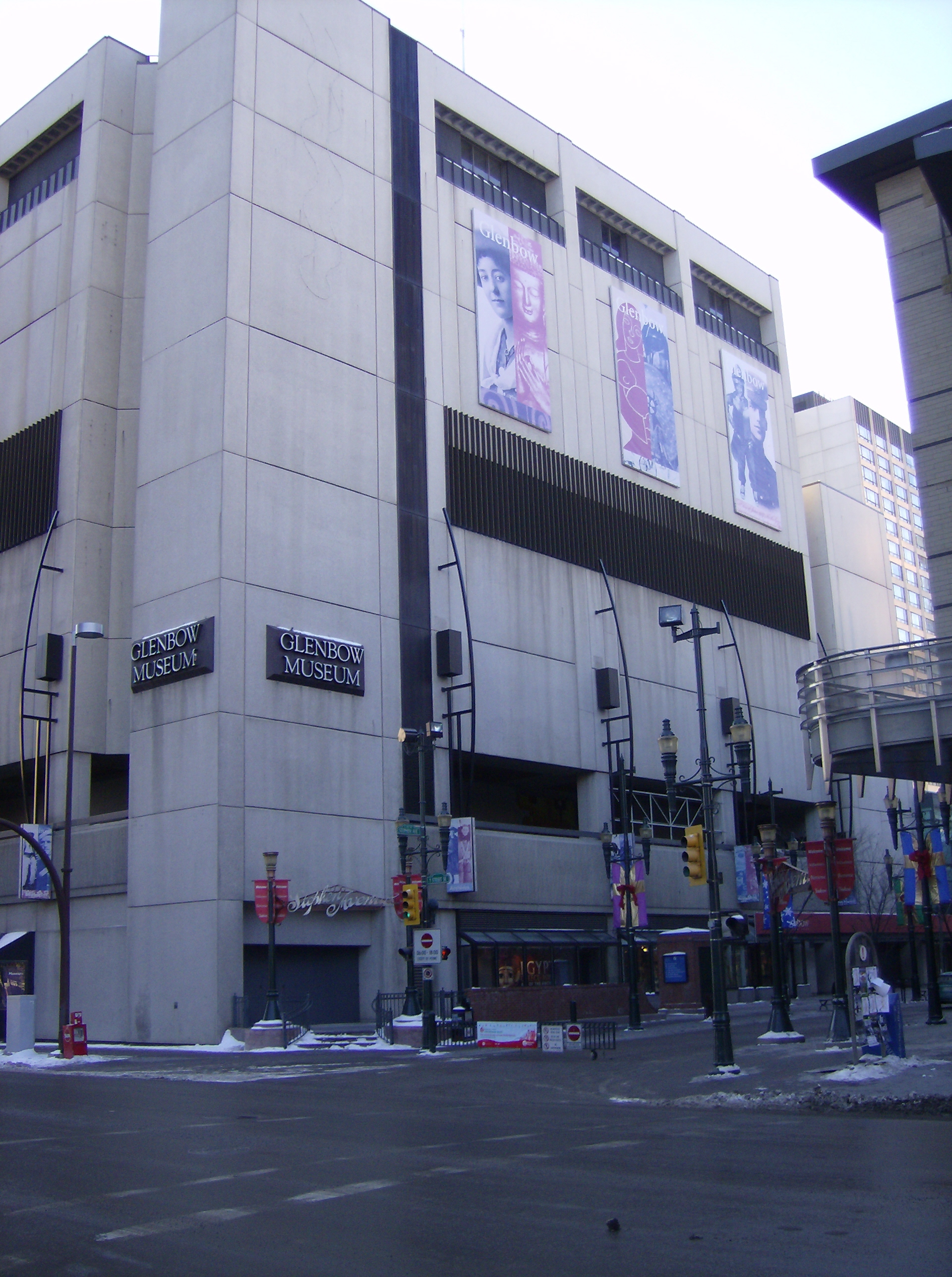- Glenbow Museum
Infobox Museum
name = Glenbow Museum
imagesize = 200
map_type = Canada Calgary
map_caption = Location in Calgary
latitude = 51.0452
longitude = -114.0609
established = 1966
dissolved =
location =Calgary ,Alberta ,Canada
type = History, Art
visitors =
director = Christine Chin
curator =
publictransit = Olympic PlazaC-Train station
website = [http://www.glenbow.org The Glenbow Museum] The Glenbow Museum inCalgary isWestern Canada 's largestmuseum , with over 93,000 square feet (8,600 m²) of exhibition space in more than 20 galleries, showcasing a selection of the Glenbow's collection of over a million objects.The Glenbow-Alberta Institute was formed in
1966 , whenEric Harvie donated his vast historical collection to the people ofAlberta . Located in downtown Calgary across from theCalgary Tower , the Institute maintains the Glenbow Museum, open to the public, which houses not only its museum collections, but also a very extensive art collection, library, and archives. In 2007, a new permanent exhibit entitled "Mavericks" opened on the third floor; this exhibit traces the history of Alberta through a series of 48 influential and colourful personalities. The Glenbow Museum'sCEO ,Jeff Spalding , took over from Glenbow's former President and CEO Mike Robinson.Museum
The museum has four primary collections:.
*Cultural History
*Ethnology
*Military History
*MineralogyCultural history
The Glenbow
cultural history collection contains over 100,000 objects originating from many corners of the world, providing insight into the life in Western Canada from the late 1800s to the present day. Items in the collection reveal how people made a living, worshipped, and were governed, what they did to relax, how they dressed and ate, and how family mementos helped create a home in a new land. The cultural history collection also includes important holdings of Albertapottery , Western Canadianfolk studies ,northern exploration s,numismatics , pressedglass , andtextile s.Ethnology
The Glenbow ethnology collection contains approximately 48,000 items made or used by the indigenous peoples of North America, particularly the
Northern Plains , as well as the Northwest Coast,Arctic , andSubarctic regions, and select regions ofSouth America ,Africa ,Oceania , andAsia .Military history
The Glenbow's military collection is the most diverse in Western Canada, with 26,000 items, spanning many countries over nearly five centuries, particularly
Europe an,Asia n, andNorth America nfirearms and edged weapons. Also well represented areJapan ese arms andarmour , and Canadianmedal s, orders, anddecoration s.Mineralogy
The Glenbow's extensive
mineralogy collection includes minerals and precious and semi-precious stones from around the world, particularly Western Canada. Specimens were selected for exhibition value as well as mineralogical significance, and the 'Treasures of the Mineral World' exhibition is popular withgeologist s, rock hounds, and visitors of all ages seeking to enjoy the depth and diversity of the Earth's minerals. The exhibit includes minerals that glow in the dark, a display ofFool's Gold , a piece of the Earth's oldest rock, and rock crystals in every colour of the rainbow.Asian collection
In addition, the Glenbow has a substantial Asian collection on semi-permanent loan from the Bumper Development Corporation Ltd., including reliefs, masks, paintings and sculptures in stone, wood, and metal from the
Buddhist andHindu cultures of Asia, from the first century to the 18th century.Art collection
The Glenbow's art collection comprises 28,000 works, mainly dating from the 19th century to the present, primarily historical, modern, and contemporary work from or pertaining to the northwest of
North America . The collection contains an outstanding selection oflandscape painting , a renowned Canadian prints collection including works from modernist printmakerSybil Andrews ,First Nations andInuit Art, AmericanIllustration , and Western and Wildlife Art. Works from other parts of the world provide a broader national and international frame of reference.Library
The Glenbow's library contains 100,000 books, periodicals, newspapers, maps, and pamphlets with relevance to Western Canada, from the time buffalo roamed the plains, to the coming of the
railroad and settlement of the West, to political, economic and social events inAlberta today. The collection includes rare illustrated equestrian literature from the 15th century, school books from one-room school houses, and numerous volumes and other material related to the Museum's collections of military history, ethnology, mineralogy and art.Archives
The Glenbow archives are one of Canada's largest non-governmental repositories and a major research centre for historians, writers, students, genealogists, and the media. They comprise an extremely large collection of archival records of individuals, families, organizations and businesses from Western Canada and includes 3,500 metres of textual records, over a million photographs, 350 hours of film footage, and 1,500 sound recordings. The Archives range from the 1870s to the 1990s, documenting the social, political and economic history of Western Canada, particularly
Calgary and southern Alberta. Areas of specialty includeFirst Nations , Métisgenealogy , theRoyal Canadian Mounted Police ,ranching andagriculture , thepetroleum industry,politics , labour, women, and business. Unique collections in the archives include catalogs, cookbooks, records of land sales by theCanadian Pacific Railway , maps, school yearbooks, [http://www.glenbow.org/archhtm/gene.htm extensive genealogical resources,] and [http://www.glenbow.org/archhtm/metis.htm an excellent collection of resources for the study of Métis genealogy.]External links
* [http://www.glenbow.org The Glenbow site]
* [http://www.glenbow.org/blackfoot/index.htm Online exhibit on Niitoy-yiss (tipi) of the Nitsitapii (Blackfoot) people, based on Glenbow collection, in French and English]
* [http://ww2.glenbow.org/lasearch/searmenu.htm Glenbow Library and Archives search menu]
Wikimedia Foundation. 2010.
